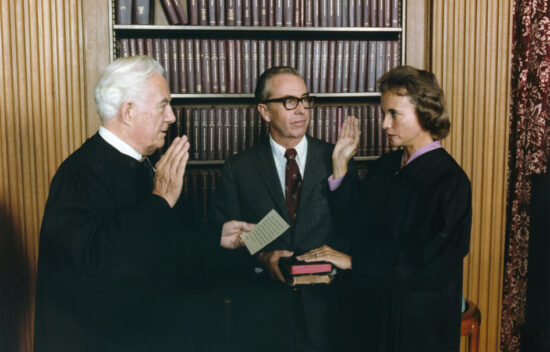
American Heroes: Past and Present (ELL)
100 minHow have individual Americans throughout history embodied civic values?
Students will:
- Understand civic values that have motivated significant Americans throughout history.
- Analyze the values, attitudes and actions of those individuals.
- Compare their own values and actions with those of American heroes.
- Assess the ways they can or do act in accordance with these values.
Handouts may have two versions. Version 1 is at a higher level than Version 2.
- Handout A: What is a Hero?
- Handout B: Character Cards (Versions 1 and 2)
- Handout C: My American Hero (Versions 1 and 2)
- Handout D: Dinner Party Seating Chart (Versions 1 and 2)
- Handout E: Glossary
- At the beginning of class, have students post their homework from the previous day around the room.
- Distribute Handout A: What is a Hero? Allow students about ten minutes to take a “gallery tour” to study their classmates’ work and answer the questions on Handout A.
- Bring students back for a large-group discussion to develop a list of characteristics shared by the selected heroes. A class recorder can list the traits on the board.
- Help students understand what the word “hero” does NOT mean. It does not mean “popular:” celebrities are not necessarily heroes. It does not mean “perfect:” heroes are human and therefore imperfect.
- Guide them to an understanding of the Peter Gibbon quotation: “[Heroes are] imperfect people of extraordinary achievement, courage, and greatness of soul whose reach is wider than our own.”
- Ask students how heroes can act as leaders. What is the role of leaders? How are leaders developed?
Activity I – 20 min.
- Distribute one card from Handout B: Character Cards (Version 1 or 2) to each student. Students should read the character card and complete Handout C: My American Hero (Version 1 or 2).
- After completing their analyses, students will play the hero and take part in a historic “reception.” Give students five to ten minutes to circulate through the room, introduce themselves to other heroes, and provide a glimpse into their lives and work.
Activity II – 50 minutes
- After students have had a chance to speak to several historic figures, form mixed groups of four that will represent different time periods, genders, beliefs, careers, etc. Possible groups might look something like:

- In these new groups, students will have a “dinner party” where they will get to know the other historical figures in their group. Students should act in character and engage in a conversation that allows them to compare their assigned heroes’ lives, accomplishments, values, opinions, and heroic acts.
- When they have completed this sharing, each group should work together to answer questions on Handout D: Dinner Party Seating Chart.
- Have students list values exemplified by the figures highlighted in this lesson and take an opinion poll of their peers, relatives, and neighbors to determine if these civic values are still significant today. They should create a chart to record the civic values voted for, and circle the values that receive the most votes. Then they can write a paragraph analyzing their results. Were ancient philosophers correct that virtues are eternal? Are the values exhibited by individuals in the past much different than those that today’s heroes exemplify?
- Have students write an epitaph for one or more of the heroes. Additional sources for information about all of the heroes in this lesson can be found in the Character Card Resources in the appendix.
- Ask students to write a paragraph in response to the following prompt: The heroes we learned about today lived in different times came from diverse backgrounds. How, if at all, did those differences affect the values they put in practice? Which is greater, the differences between Americans or the ideals that unite us? Have students make and then exchange business cards for their assigned heroes.
- Have students create a PowerPoint slide show about their assigned “dinner party” hero. Slide shows could be combined to include all historical figures. Each student could narrate his or her slide, or students could select a speech from their “dinner party” to introduce the heroes from their table.
- Have students interview an individual in their community who has acted heroically. Students should share the results of this oral history project through transcripts of the interviews, photo essays, or a collage.





